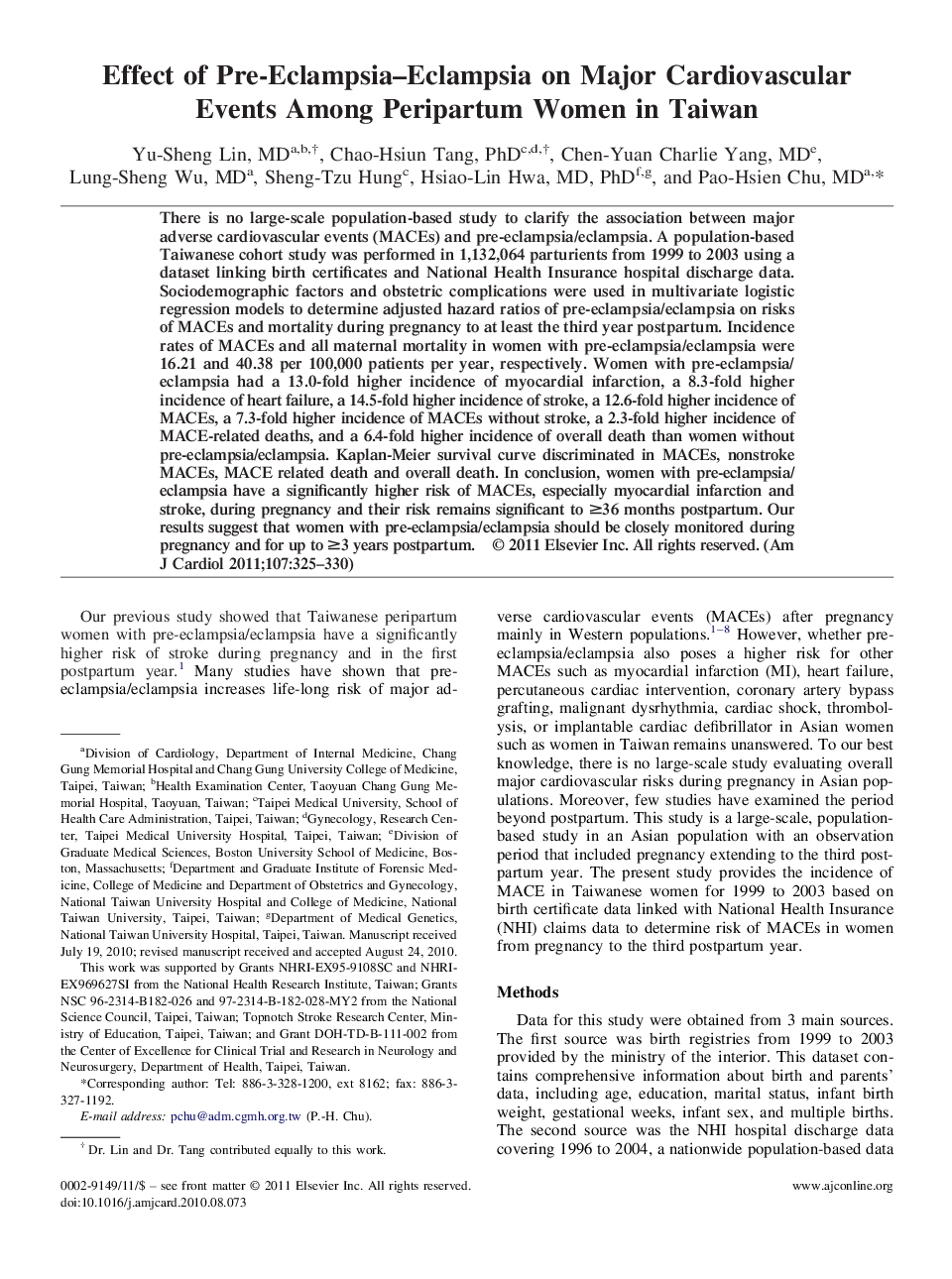| Article ID | Journal | Published Year | Pages | File Type |
|---|---|---|---|---|
| 2857044 | The American Journal of Cardiology | 2011 | 6 Pages |
There is no large-scale population-based study to clarify the association between major adverse cardiovascular events (MACEs) and pre-eclampsia/eclampsia. A population-based Taiwanese cohort study was performed in 1,132,064 parturients from 1999 to 2003 using a dataset linking birth certificates and National Health Insurance hospital discharge data. Sociodemographic factors and obstetric complications were used in multivariate logistic regression models to determine adjusted hazard ratios of pre-eclampsia/eclampsia on risks of MACEs and mortality during pregnancy to at least the third year postpartum. Incidence rates of MACEs and all maternal mortality in women with pre-eclampsia/eclampsia were 16.21 and 40.38 per 100,000 patients per year, respectively. Women with pre-eclampsia/eclampsia had a 13.0-fold higher incidence of myocardial infarction, a 8.3-fold higher incidence of heart failure, a 14.5-fold higher incidence of stroke, a 12.6-fold higher incidence of MACEs, a 7.3-fold higher incidence of MACEs without stroke, a 2.3-fold higher incidence of MACE-related deaths, and a 6.4-fold higher incidence of overall death than women without pre-eclampsia/eclampsia. Kaplan-Meier survival curve discriminated in MACEs, nonstroke MACEs, MACE related death and overall death. In conclusion, women with pre-eclampsia/eclampsia have a significantly higher risk of MACEs, especially myocardial infarction and stroke, during pregnancy and their risk remains significant to ≥36 months postpartum. Our results suggest that women with pre-eclampsia/eclampsia should be closely monitored during pregnancy and for up to ≥3 years postpartum.
